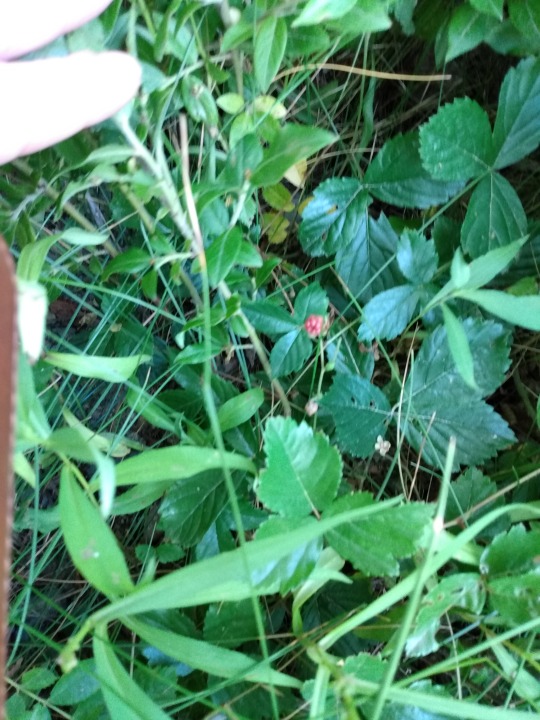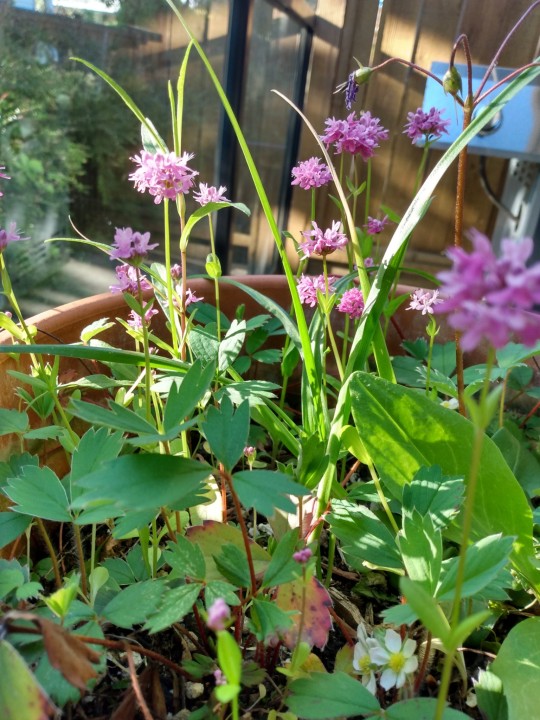#I am not a wild strawberry
Text
I am the evergreen with fading needles
roots deep in sandy soils
slightly burned from ancient fires
a home to only the survivors
Tenille K. Campbell, I am not a wild strawberry
#Tenille Campbell#I am not a wild strawberry#nedi nezu#Good Medicine#evergreen#nature#nature quotes#ancient fires#survivors#Indigenous literature#poetry#poetry quotes#quotes#quotes blog#literary quotes#literature quotes#literature#book quotes#books#words#text
24 notes
·
View notes
Text

arr... pirate bat doodle be upon ye...
#pirate#bat#anthro#furry#dnd#dungeons and dragons#dnd oc#traditional art#aheeheehee...#diamine majestic blue and wild strawberry!#and miscanthus hills of course#i filled one of my twsbis with it and i am slowly learning to forget about the fact that i will never be able to clean the shimmer out of it#just dont worry about it#my art#ghouldraws#cadma
84 notes
·
View notes
Text
Borfday…..
#we got breakfast a#and we’re gonna make a strawberry cake later#(from scratch!!!! we’ll see how this goes….)#and some friends are gonna come over and we are gonna have fun!!!!#I am 22!!!!! wild#kaz rambles
21 notes
·
View notes
Text
What a vacation without the Fowls feels like

#holly short#she just enjoying the wild and looking pretty#strawberry dress holly#i am once again bringing this back#hell yeah#af#artemis fowl#fowldom
88 notes
·
View notes
Text
thinking abt that post that says i hope a fragment of me is with you too bc they're a mosaic of all the people they've had and have in their lives and im!!! reminiscing 🥺
we're truly bits and pieces of other people whether we realize it or not and it has me all emotional
#i still wrote my uppercase e and my sevens how my bestie in middle school did hers#when i see raspberry jam i think of another friend and how we picked wild raspberries down by the only hospital in our small town#we made jam out of them and canned it together#i think of the same person when i see strawberries bc she gifted me a pair of strawberry earrings for one of my birthdays#i don't have them bc they got lost in a move but!!! still#on and on and on it goes#i am pieces of my friends and family and coworkers all glued together to make a humanoid shape
2 notes
·
View notes
Audio
Fret not dear heart, let not them hear
The mutterings of all your fears, the fluttering of all your wings
#The Horror and the Wild (song)#The Horror and the Wild#the amazing devil#i know dear heart is like; an amazing devil term of endearment but both my favourite space sapphics have used similar endearments#and im always soft for unusual and grand gestures#my heart my song my soul my (name)#or reffering to people as things that are 'their colour' or dumb ones like strawberry tallcake (:#if anyone read this + knows the two space sapphic couples i am reffering to: kisses you gently on the forehead
14 notes
·
View notes
Audio
Deep as the sea and as wild as the weather
We will go just you and me to pick wild strawberries together
Or be livin' on our own, in a cabin in a meadow
Or meanderin' alone, we can face the world forever or we'll
Hit the bounding main or be on a railroad train
Hit the boundless tide or be on a steamboat ride
Hit the bounding main or be on a midnight plane
Hit the pounding tide or be on a rainbow ride
I don’t live in a cabin in a meadow, but my little town is pastoral enough, with sheep grazing the high grass just down the road, and Canada geese, herons and coots gliding on the pond in the park, and the woods to amble in and forage Elder flowers (in the Spring) or Blackberries (in the late Summer)... And I can’t wait for my girl to be here with me tomorrow, and do all these bucolic things together, a picnic perhaps, or enjoying the garden, where we might pick Strawberries, whilst listening to Gordon Lightfoot...
#Wild Strawberries#Gordon Lightfoot#Waiting For You#Oh I am waiting for her alright!#and I cannot wait much longer!#Gordon Meredith Lightfoot Jr.#Canadian Singer#Canadian Songwriter#Canadian Musician#Canadian Folk#Canadian Folk Music#Folk#Folk Music#Canadian Rock#Canadian Rock Music#Canadian Country Music#Canadian Country#Favorite Ontarian#Favorite Canadian#My girl works at a record store and loves music so I am sure she will enjoy listening to his ballads#Canada Chronicles
5 notes
·
View notes
Text
WOAH lesbians jumpscare I <3 these two a lot

#cookie run#wild strawberry cookie#candlelight cookie#rarepair#I HAVE SO MANY HCS FOR THEM you do not understand my thpughts on these two#ALSO WS HAS A REDESIGN THINGY SO FEEL FREE TO ASK ME ABT THAT i <3 talking abt rots very traumatic but also totally made up backstory#proship dni#ALSO PLEASE DONT SAY ANYTHING ABT THEM NOT INTERACTING/NOT BEING IN THE SAME GAME I AM BEGGING i know about that </3
11 notes
·
View notes
Text
NOT normal about wild strawberries btw. that's one thing about me that terrifies me sometimes.
#sorry. i go through every human emotion when picking and eating wild strawberries.#it's agonizing and relentless!! .. oh my god the taste of these things who wants some#anyways i scare myself when doing this because i feel like im either gonna ascend to the heavens or kill myself#literally got tangled in a thorny bush once because there were strawberries near its roots i am genuinely soooo unwell#and *now* my bones hurt and i think i saw god but at least i have a bowl of strawberries. it's addiction it's infatuation it's romance.
3 notes
·
View notes
Text
doesn't feel real that it's so close to 2023 for me and already 2023 for some
#⋯ ꒰ა starry thoughts ���꒱ *·˚#omg ... hi. i disappeared again oopsies i am back for a bit!!#bgc is kinda wild LOL not there anymore but woaaa concert cool !!#i barely listen to opm voluntarily but i do listen to it when my dad plays music in the car hehe#and whenever it does play w school stuff ? only ben&ben i listen to a lot !! even then tho havent listened in a while#anyways. back home after being out for just a lil but i loved how i look/ed <3#super cute !! like a lil strawberry ^___^ hee hee#i look like patrick the starfish now nvm fuck this LMFAOOO
2 notes
·
View notes
Text
depop's recommended for you page is SO funny. it always gets my sizes wrong (despite the fact I have my sizes saved? like huh??) and im not sure WHERE it pulls data on what I might like from, but its not my likes, thats for sure, bc the styles recommended are SO wildly different from what I actually. have hit the like button on.
I just got a shirt recommended that just says 'i <3 female orgasm' tho. thats the first thing on there that made me stop, gasp, and laugh out loud imagining wearing that in my very conservative town...
#JKHDFKJDHJFKNJ THANKS???#its a wonder ive found ANYTHING I like tbh . their algorithm is wild#but i use depop and amazon wishlists as like. insp#moreso than actually wanting to buy the stuff#i mean id like to BUY them but they are usually OVERPRICED. like i guess i can understand if its brand new but girl thas from a thriftstore#i go to thrift stores enough 2 kno whats a deal and whats a rip off#still...I do like how custom/unique a lot of the stuff is. its like. lets save this and then#try and find similar when im actually. out thrifting. instead of paying 35$ for a Shirt. u know#and i sold on depop i KNOW about the fees+shipping. still! still too much overpriced stuff#if i was working itd be different#i did spend a LOT On clothes when i worked at walmart lol#but i LIKE clothes and fashion and it makes me happy#and i could support small etsy businesses! i got some rly cute#custom strawberry shortcake sneakers that i still wear from etsy#they still are sturdy and comfy 2 1/2 yrs later! so thats epic#also homemade etsy candles have a 50/50 chance of being the best smell ever#or straught up exploding#SO its FUN and epic to support them#omg i wanna ask my sister if we can go to the witchcraft store in town actually theyhave great candles too#I am in a very Wanty mood KJDSAHFK#the LONGING and YEARNING hours have dawned. gemini in retrograde or something#sanchoyorambles
8 notes
·
View notes
Text
I am the jagged cliffs of northern waterfalls
painted upon generations ago
carrying stories from a past
you pretend doesn't exist
Tenille K. Campbell, I am not a wild strawberry
#Tenille Campbell#nedi nezu#Good Medicine#I am not a wild strawberry#stories#Indigenous literature#Indigenous poetry#truth and reconciliation#Canadian literature#Canada Day#poetry#poetry quotes#quotes#quotes blog#literary quotes#literature quotes#literature
36 notes
·
View notes
Text


me, wild strawberry
#selfie#irish#botany#wild strawberry#i got this dress in a charity shop today and i am in looooooooove
11 notes
·
View notes
Photo

A whole bunch of berries!! @dollsonmain ‘s berry posts reminded me I hadn’t checked ours in a while! Maine blueberries are tiny but they are pack a lot of flavor! So good:)

And nope, not a strawberry but a blackberry! I hadn’t known that many berry plants had similar flowers so thank you @dollsahoy for that info:) Can’t wait!
#I am a berry fiend#except strawberries because I'm allergic#which sucks as they smell so good!#berries#blueberries#blackberries#Maine#wild plants
4 notes
·
View notes
Text


please look at the sea blush we have blooming in our native plants pot!! it's super pretty!! if you look closely in the second picture you can see a strawberry flowers too <3
#i am very proud of this one small pot and i look at it every day and try to identify the plants in it#the grass one is camas and the broad leaved one is probably shooting star#not 100% sure on the shooting star tho#also wild strawberries!!#we gave the planter to my mom for mother's day last year :)#moth meanderings
3 notes
·
View notes
Text
Chemically sterilized...or mechanically sterilized?
It is clear that applying chemicals to your yard and landscape, be it fertilizers, weed killers, or pesticides, has devastating effects to the community of life that is present in every place.
But is the terrifying decline in insects explainable by chemicals alone?
When i am in mowed environments, even those that I know have no lawn chemicals, they are almost entirely empty of life. There are a few bees and other insects on the dandelions, but not many, and the only birds I see are American robins, Grackles, and European starlings.
Even without any weed killers at all, regular mowing of a lawn type area eliminates all but a few specially adapted weeds.
The plants of a lawn where I live include: Mouse ear chickweed, Birds-eye Speedwell, Common blue violet, Dandelion, Wild Garlic, Creeping charlie, White Clover, Black Medick, Broad-leaved plantain, Mock Strawberry, Crabgrass, Small-flowered Buttercup, Ribwort Plantain, Daisy Fleabane, a few common sedges, Red Deadnettle...That sounds like a lot of plants, but the problem is, almost all of them are non-native species (Only Violets, Daisy Fleabane, and the sedges are native!) and it's. The Same. Species. Everywhere. In. Every. Place.
How come...? Because mowed turf is a really specific environment that is really specifically beneficial to a number of almost entirely European plants, and presents stressors that most plants (including almost all native north american plants) simply can't cope with.
The plants mentioned above are just the flowering weeds. The grasses themselves, the dominant component of the lawn, are essentially 100% invasive in North America, many of them virulently and destructively invasive.
Can you believe that Kentucky bluegrass isn't even native to Kentucky? Nope, it's European! The rich pasture of the Bluegrass region of Kentucky was predominantly a mix of clover, other legumes, and bamboo. The clovers—Kentucky clover, Running buffalo clover, and buffalo clover—are highly endangered now (hell, kentucky clover wasn't even DISCOVERED until 2013) and the bamboo—Giant rivercane, Arundinaria gigantea—has declined in its extent by 98%. Do European white and red clovers fulfill the niches that native clovers once did? Dunno, probably not entirely.
One of the biggest troubles with "going native" is that North America legitimately does not have native grass species that really fill the niche of lawn. Most small, underfoot grassy plants are sedges and they are made for shady environments, and they form tufts and fancy sprays, not creeping turf. Then there's prairie grasses which are 10 feet tall.
What this means, though, is that lawns don't even remotely resemble environments that our insects and birds evolved for. Forget invasive species, lawns are an invasive BIOME.
It's a terrible thing, then, that this is just what we do to whatever random land we don't cover in concrete: back yards, road margins, land outside of churches and businesses, spaces at the edges of fields, verges at bypasses and gas stations...
Mowing, in the north american biomes, selects for invasive species and promotes them while eliminating native species. There's no nice way to put it. The species that thrive under this treatment are invasive.
And unfortunately mowing is basically the only well-known and popular tool even for managing meadow and prairie type "natural" environments. If you want to prevent it from succeeding to forest, just mow it every couple of years.
This has awful results, because invasive species like Festuca arundinacea (a plant invented by actual Satan) love it and are promoted, and the native species are harmed.
Festuca arundinacea, aka Tall Fescue, btw is the main grass that you'll find in cheap seed mixes in Kentucky, but it's a horrific invasive species that chokes everything and keeps killing my native meadow plants. It has leaves like razor blades (it's cut me so deeply that it scarred) and has an endosymbiont in it that makes horses that eat it miscarry their foals.
And this stuff is ALL OVER the "prairie" areas where I work, like it's the most dominant plant by far, because it thrives on being mowed while the poor milkweeds, Rattlesnake Master and big bluestems slowly decline and suffer.
It's wild how hard it is to explain that mowing is a very specific type of stressor that many plants will respond very very negatively to. North American plants did not evolve under pressures that involved being squished, crushed, snipped to 8 inches tall uniformly and covered in a suffocating blanket of shredded plant matter. That is actually extremely bad for many of the prairie plants that are vital keystone species. Furthermore it does not control invasive species but rather promotes them.
Native insects need native plant cover. Many of them co-evolved intimately with particular host plants. Many others evolved to eat those guys. And Lord don't get me started on leaf removal, AKA the greatest folly of all humankind.
So wherever there is a mowed environment, regardless of the use of chemicals or not, the bugs don't have the structural or physical habitat characteristics they evolved for and they don't have the plant species they evolved to be dependent on.
Now let's think about three-dimensional space.
This post was inspired when I saw several red winged blackbirds in the unmowed part of a field perching on old stems of Ironweed and goldenrod. The red-winged blackbirds congregated in the unmowed part of the field, but the mowed part was empty. The space in a habitat is not just the area of the land viewed from above as though on a map. Imagine a forest, think of all the squirrels and birds nesting and sitting on branches and mosses and lichens covering the trunks and logs. The trees extend the habitat space into 3 dimensions.
Any type of plant cover is the same. A meadow where the plants grow to 3 feet tall, compared with a lawn of 6 inches tall, not only increases the quality of the habitat, it really multiplies the total available space in the habitat, because there is such a great area of stems and leaves for bugs and birds to be on. A little dandelion might form a cute little corner store for bugs, A six foot tall goldenrod? That's a bug skyscraper! It fits way more bugs.
It's not just the plants themselves, it's the fallen leaves that get trapped underneath them—tall meadow plants seem to gather and hoard fallen leaves underneath. More tall plants is also more total biomass, which is the foundation of the whole food chain!
Now consider light and shade. Even a meadow of 3ft tall plants actually shades the ground. Mosses grow enthusiastically even forming thick mats where none at all could grow in the mowed portions. And consider also amphibians. They are very sensitive to UV light, so even a frog that lives in what you see as a more "open" environment, can be protected by some tall flowers and rushes but unable to survive in mowed back yard
#anti lawn#kill your lawn#native plants#the ways of the plants#native plant gardening#plants#random#bitching about mowing again
867 notes
·
View notes